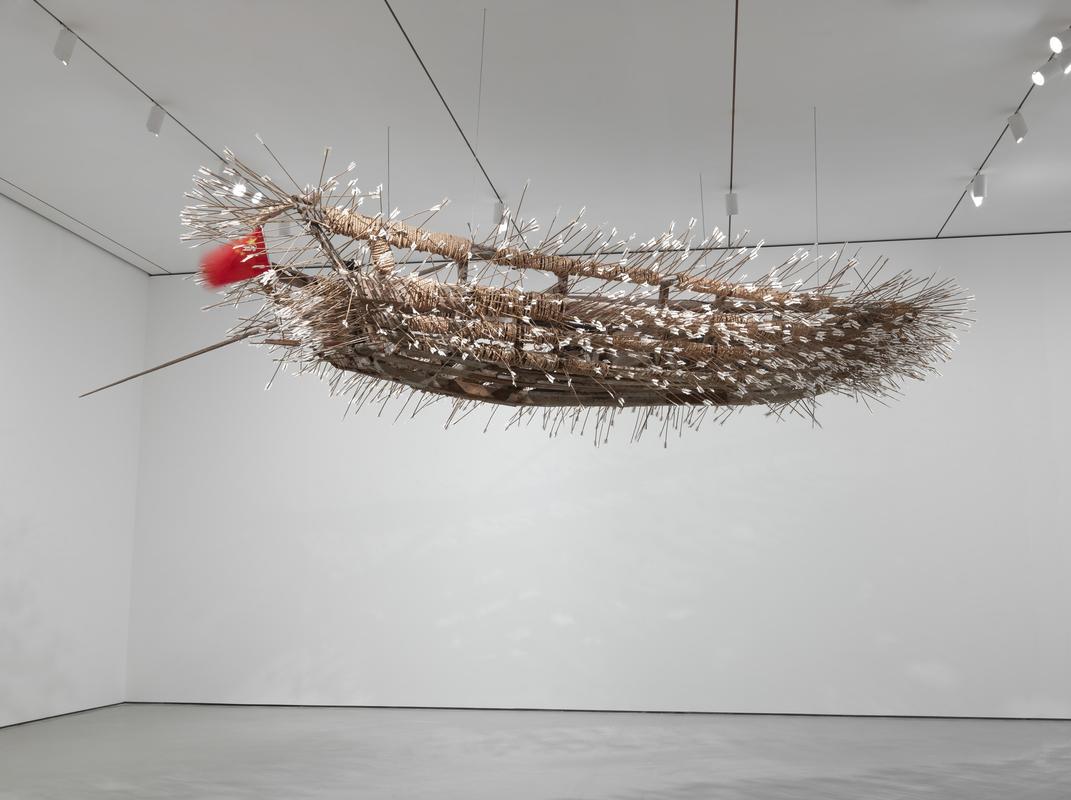More about Borrowing Your Enemy's Arrows

Sr. Contributor
There’s a famous story in the historical text "Sanguozhi," also called "Records of the Three Kingdoms," where Chinese general Zhuge Liang needed to replenish his store of arrows for his army.
He had his men make straw dummies, load them up into ships and sail them across the Yangtze river in the early dawn. Thanks to the heavy mist, the nearby enemy soldiers thought they were facing an ambush and showered the boats with arrows. 100,000 of them according to legend. Our artist Cai Guo-Qiang filled the boat in Borrowing Your Enemy’s Arrows with 3,000 arrows to bring his historical allusion to life.
Guo-Qiang employs a level of spectacle in this work similar to pieces like Hung Liu’s Transformation, but with arrows instead of fortune cookies (there have likely been fewer mice in attendance to the exhibit.) Despite the different materials, both artists focus on cultural pluralism on a similarly epic scale.
The boat used in this piece was excavated from the waters surrounding Guo-Qiang’s home city of Quanzhou. The three thousand feathered arrows piercing it were all made in China as well. When speaking of his work, our artist describes how the arrows represent wounds that China and its culture received after opening itself up to the world at large. If the allusion to Zhuge Liang’s story was any indication, the intent of the piece doesn’t end there. Each arrow is also what China has gained as a result of adapting and evolving from said cultural collisions.
So, this isn’t a corpse suspended in midair, but rather a collection of cool scars with stories behind them. Our artist sees the feathers adorning the arrows to be of particular importance as well. Like the feathers of a bird’s wing woven together to give flight to the boat. It’s hard to discern from the photo, but there’s also a small Chinese flag affixed to the stern of the boat, with a fan focused on it. A small victorious punctuation to echo the boat’s transformation into a soaring bird.
Sources
- "Cai Guo Qiang. Borrowing Your Enemy's Arrows. 1998: MoMA." The Museum of Modern Art. Accessed September 28, 2021. https://www.moma.org/audio/playlist/182/2432.
- "Cai Guo-Qiang. Borrowing Your Enemy's Arrows. 1998: MoMA." The Museum of Modern Art. Accessed September 28, 2021. https://www.moma.org/collection/works/81348.
- Lin, Xiaoping. Children of Marx and Coca-Cola. University of Hawaii Press, 2010.
- Lu, Sheldon H. Chinese Modernity and Global Biopolitics Studies in Literature and Visual Culture. Honolulu: University of Hawaii Press, 2007.
- Zhou, Yan. A History of Contemporary Chinese Art. Springer Singapore, 2020.











